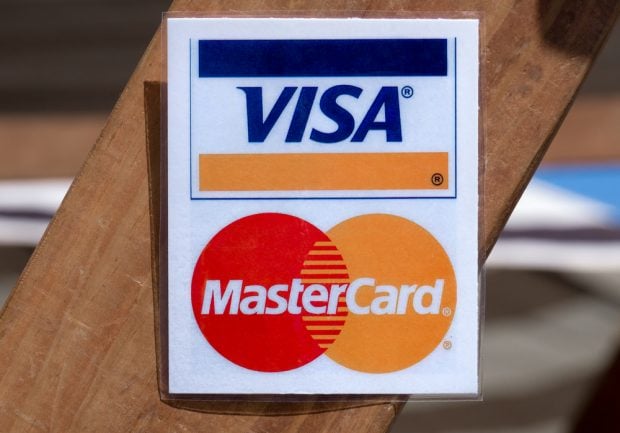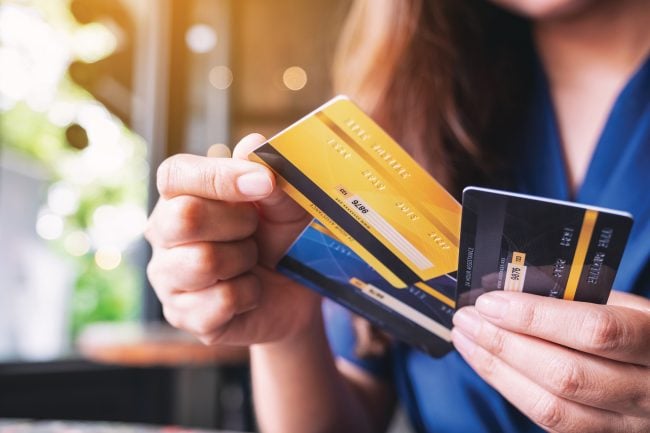After years of steadily holding back support for embedding smartchips into U.S. issued cards, the largest card brand has announcedit will now back the use of smart card technology in the U.S.
|The use of chip-embedded cards has become the norm overseas and has significantly reduced fraud at point ofsale terminals there.
|“By encouraging investments in EMV contact and contactless chiptechnology, we will speed up the adoption of mobile payments aswell as improve international interoperability and security,” saidJim McCarthy, global head of product at Visa Inc.
|EMV stands for Europay, Mastercard and Visa and is the standardfor embedded chip cards.
|“As NFC mobile payments and other chip-based emergingtechnologies are poised to take off in the coming years, we aretaking steps today to create a commercial framework that willsupport growth opportunities and create value for all participantsin the payment chain.” NFC stands for near field communication. Having the card or mobile phone closeto the terminal enables the transaction communication.
|Not only will chip technology accelerate mobile innovations, itis also expected to secure payments into the future through the useof dynamic authentication. Chip technology greatly reduces acriminal's ability to use stolen payment card data by introducingdynamic values for each transaction, the card brand said in itsannouncement.
|“Dynamic authentication is the key to securing payments into thefuture,” said Ellen Richey, chief enterprise risk officer at Visa.“Adding dynamic elements to transactions makes account data lessattractive to steal and takes more merchant systems out of harm'sway, shrinking the battlefield against criminals. The migration tochip technology will be an important security layer and a criticalstep in a comprehensive strategy to use dynamic authenticationacross all markets and all channels.”
|Visa's policy initiative didn't include any direct deadlines orincentives for issuers, but it included incentives for merchants tostart not only accepting chip-embedded cards but also be able toconduct contactless transactions as well.
|As part of the policy, Visa announced that merchants withterminals able to accept both chip and contactless transaction, andat least 75% of card transactions use the new technology in a givenyear, will no longer have to validate their compliance with paymentcard industry standards for that year.
|This provision will kick in as of Oct. 1, 2012. Processors andsub-processors will need to be fully able to process chiptransactions by April 1, 2013.
|Merchants have long complained that remaining PCI compliant isexpensive and technically challenging. Merchants who are not PCIcompliant are seen as more vulnerable to card fraud and have facedfines from the card brands and additional liability for card frauddamages.
|The card brand emphasized as well that the terminals will needto be able to accept both contact and contactless card transactionsand that merchants will still need to protect any card data thatthey store.
|The change in policy also carries a possible punishment alongwith an incentive. Currently, POS counterfeit fraud is largelyabsorbed by card issuers. With the liability shift, if a contactchip card is presented to a merchant that has not adopted, atminimum, contact chip terminals, liability for counterfeit fraudmay shift to the merchant's acquirer. The liability shiftencourages chip adoption since any chip-on-chip transaction (chipcard read by a chip terminal) provides the dynamic authenticationdata that helps to better protect all parties, the brand said.
|This provision kicks in Oct. 1, 2015 for general merchants andOctober 1, 2017 for gas stations.
|Eduardo Perez, Visa's global head of data security, said thecompany had decided to start backing embedded chip cards, in part,after the Durbin amendment's passage had settled the regulatorypicture.
|“After the passage of Durbin, we saw that we had some regulatoryclarity to move,” Perez said. In addition, he said Visa was attracted by thenotion of having its cards be usable globally instead to thesituation now where, often, cards issued outside the U.S. cannot beused inside and U.S. issued cards cannot easily be usedoverseas.
|Reaction from the industry has been largelypositive
|The card brand also wanted to cut the costs of fraud andcontinue to advance contactless payments that it believes willeventually lead to payments being made from mobile phones.
|“We were getting calls from some stakeholders who wanted to knowthe road ahead for payments,” Perez said. “What technologies did wesee on the horizon so they could prepare.”
|CUNA Mutual applauded the move. Ann Davidson, senior consultantfor CUNA Mutual Group Risk Management, said the insurer lookedforward to a time when the costs of counterfeit card fraud, themost prevalent form of card fraud, would reduce markedly.
|The chief benefit of the new cards will be to suck the energyout of the market for stolen credit card numbers, thus renderingthem less appealing to potential thieves. Dynamic verificationgenerate a different authenticating value with each transaction,thus making the card numbers themselves useless to generatecounterfeit cards. But Davidson stressed that this would not be thebiggest news for credit unions.
|“The liability shift is the big change,” she said, “sincecurrently in cases of counterfeit card fraud, credit unions bearall those costs.”
|Randy Vanderhoof, executive director of the SmartCard Alliance,an association of firms formed to advance smart card technology,said the smart card industry was ready to supply smart cards tocredit unions that might want to start issuing them. Vanderhoofsaid the first cards would have to carry magnetic stripes as wellas chips and contact-less technology and could come in at a highercost than magnetic stripe-only cards. But he added that the costswould drop with additional volume and that card issuers wouldprobably make those costs up over the medium term as their fraudlosses dropped.
|Robert Hackney, president of Card Services for Credit Unions,the association of credit unions that process their cardtransactions with FIS, also praised the move and said he expectedCSCU would be able to help its membercredit unions get the best prices on the new cards aspossible.
Complete your profile to continue reading and get FREE access to CUTimes.com, part of your ALM digital membership.
Your access to unlimited CUTimes.com content isn’t changing.
Once you are an ALM digital member, you’ll receive:
- Critical CUTimes.com information including comprehensive product and service provider listings via the Marketplace Directory, CU Careers, resources from industry leaders, webcasts, and breaking news, analysis and more with our informative Newsletters.
- Exclusive discounts on ALM and CU Times events.
- Access to other award-winning ALM websites including Law.com and GlobeSt.com.
Already have an account? Sign In
© 2024 ALM Global, LLC, All Rights Reserved. Request academic re-use from www.copyright.com. All other uses, submit a request to [email protected]. For more information visit Asset & Logo Licensing.









